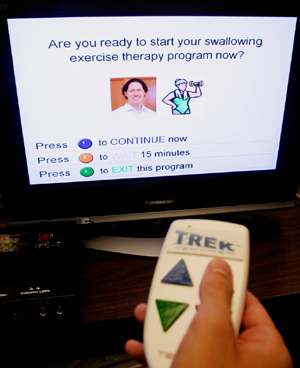The Greening of Fertilizer

The current industrial method for producing chemical fertilizer uses about 2 percent of the world's energy each year. But that could soon change dramatically because of the work of a team of UO chemists.


The current industrial method for producing chemical fertilizer uses about 2 percent of the world's energy each year. But that could soon change dramatically because of the work of a team of UO chemists.
The reauthorization of the 21st Century Nanotechnology Act -- which now includes language that supports "green nano" -- was approved by the U.S. House of Representatives in June and has moved on to the Senate for action. The Senate is scheduled to consider it in September.
 When it comes to computer technology, it's usually one size fits all, but a new research project in the Department of Computer and Information Science could change that notion.
When it comes to computer technology, it's usually one size fits all, but a new research project in the Department of Computer and Information Science could change that notion.

Choosing to live in wildfire zones. Learning your drinking water is contaminated. Trying to comprehend genocide. What could these topics possibly have in common?
By sending high-power pulses of laser light of a certain color (wavelength) through a custom-made optical fiber to produce single particles of light with different colors, physics graduate student Hayden McGuinness is studying the quantum nature of light.
A team of researchers from China and the UO are studying how meditation might provide improvements in a person's attention and response to stress.

Thanks to a five-year $3 million grant from the National Science Foundation, elementary school students in northern Oregon's Umatilla-Morrow Education Service District are taking part in an interactive science outreach program.
Check out the complete UO Slang Dictionary.
![]() Learn about ongoing research in human physiology.
Learn about ongoing research in human physiology.
Read the full report on the state's immigration history.